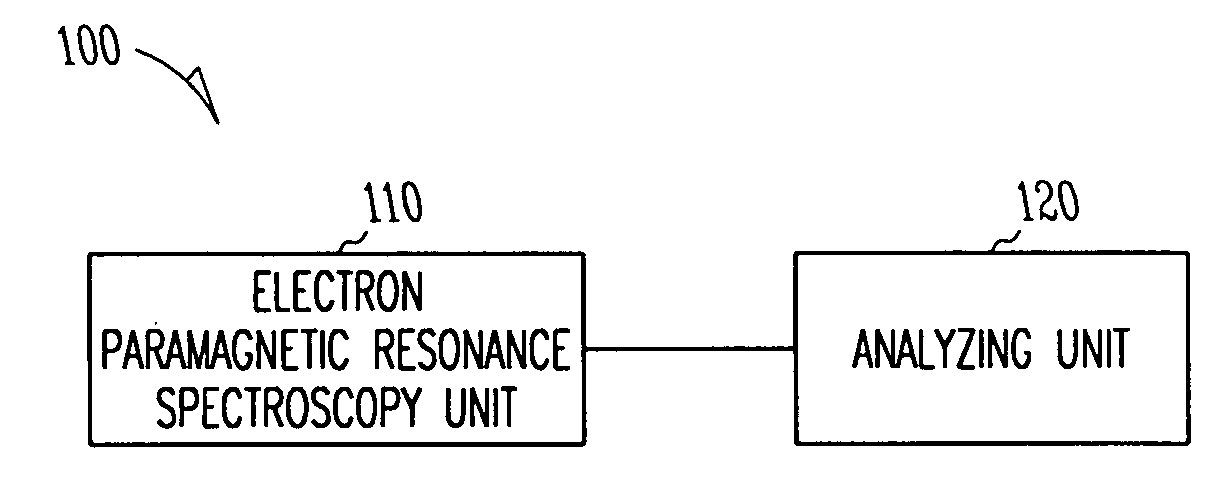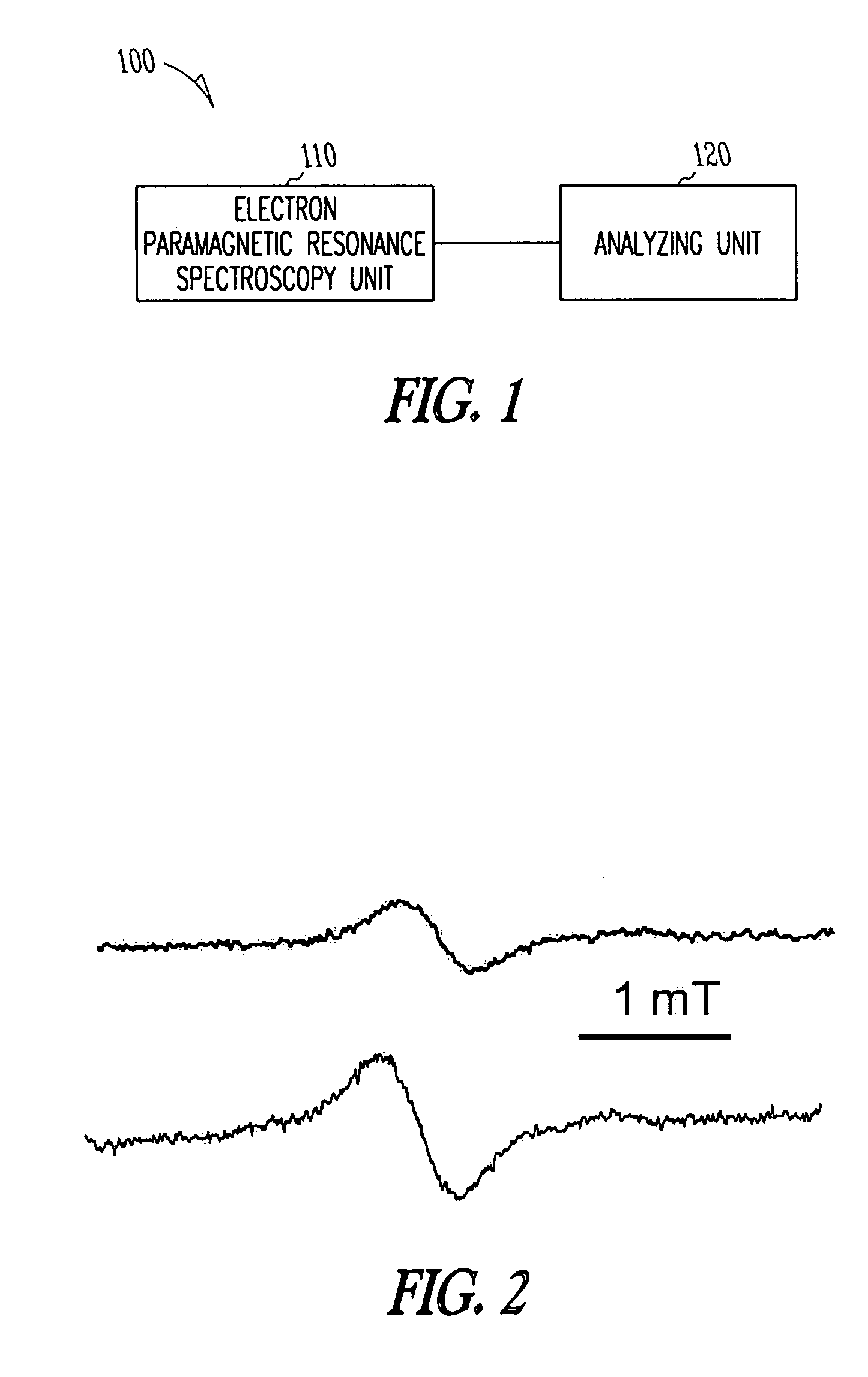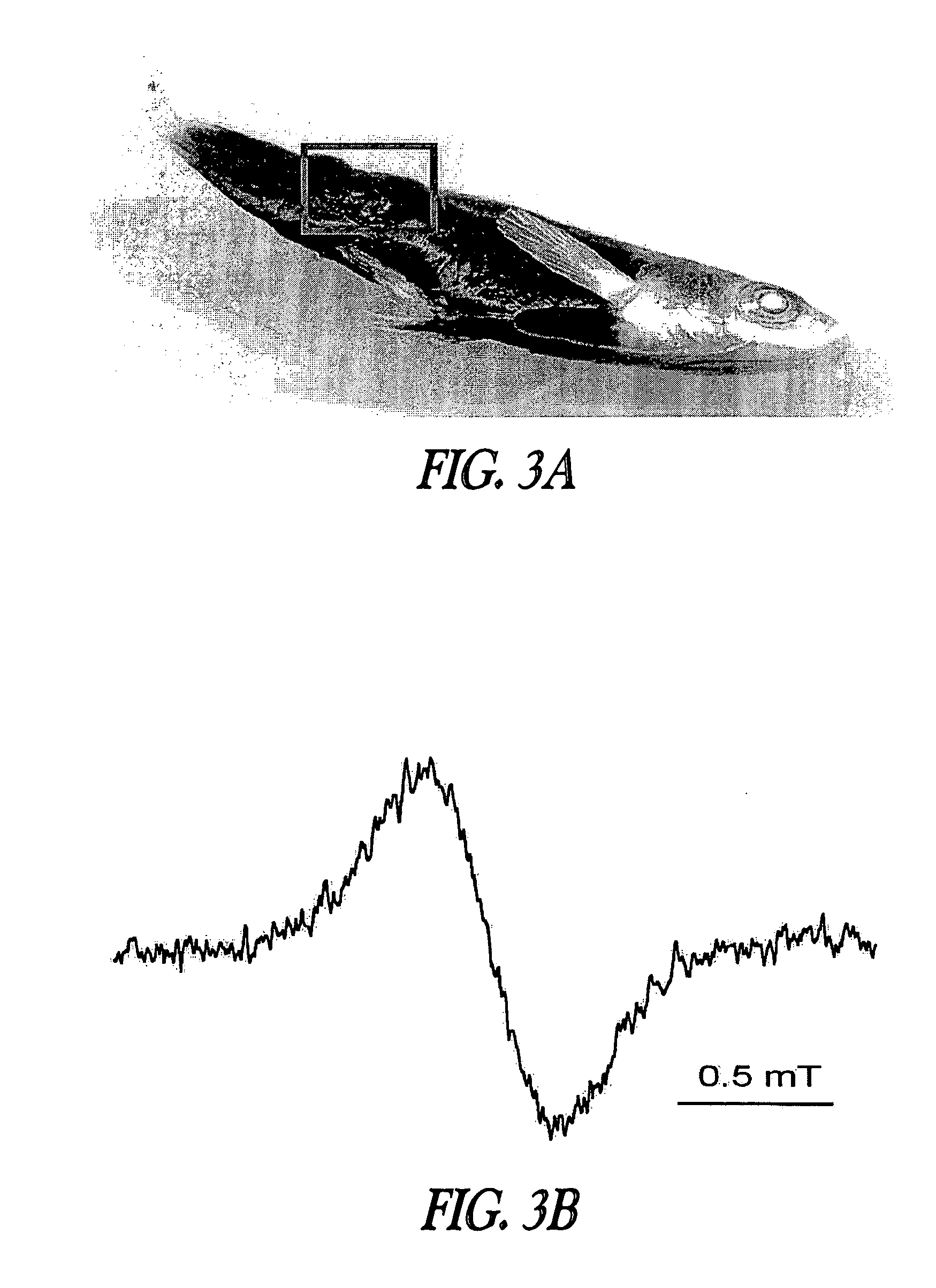Dectecting melanoma by electron paramagnetic resonance
a technology of electron paramagnetic resonance and melanoma, which is applied in the field of detecting melanoma using electron paramagnetic resonance, can solve the problems of high cost of melanoma, and difficulty in offering precise melanoma prevention recommendations, etc., and achieves the effect of reducing the risk of melanoma recurrence and the many a melanoma detection and melanoma detection and melanoma detection and electron paramagnetic resonance detection and melanoma detection and electron paramagnetic resonance detection and melanoma detection and electron paramagnetic resonance detection and melanoma detection and melanoma detection and electron paramagnetic resonance detection and melanoma detection and detection of melanoma detection and detection of melanoma and the field of melanoma detection and melanoma diagnosis melanoma diagnosis
- Summary
- Abstract
- Description
- Claims
- Application Information
AI Technical Summary
Problems solved by technology
Method used
Image
Examples
Embodiment Construction
[0130] In the following detailed description, reference is made to the accompanying drawings which form a part hereof, and in which is shown by way of illustration specific embodiments in which the invention may be practiced. These embodiments are described in sufficient detail to enable those skilled in the art to practice the invention. Other embodiments may be utilized and structural, logical, and electrical changes may be made without departing from the spirit and scope of the present invention. The various embodiments are not necessarily mutually exclusive, as some embodiments may be combined with one or more other embodiments to form new embodiments. The following detailed description is, therefore, not to be taken in a limiting sense.
[0131] In an embodiment, electron paramagnetic resonance spectroscopy is used to provide a signal from melanin to image a melanoma, to detect metastatic melanoma in a sentinel lymph node, to measure light penetration in melanocytes in skin, or c...
PUM
 Login to View More
Login to View More Abstract
Description
Claims
Application Information
 Login to View More
Login to View More - R&D
- Intellectual Property
- Life Sciences
- Materials
- Tech Scout
- Unparalleled Data Quality
- Higher Quality Content
- 60% Fewer Hallucinations
Browse by: Latest US Patents, China's latest patents, Technical Efficacy Thesaurus, Application Domain, Technology Topic, Popular Technical Reports.
© 2025 PatSnap. All rights reserved.Legal|Privacy policy|Modern Slavery Act Transparency Statement|Sitemap|About US| Contact US: help@patsnap.com



